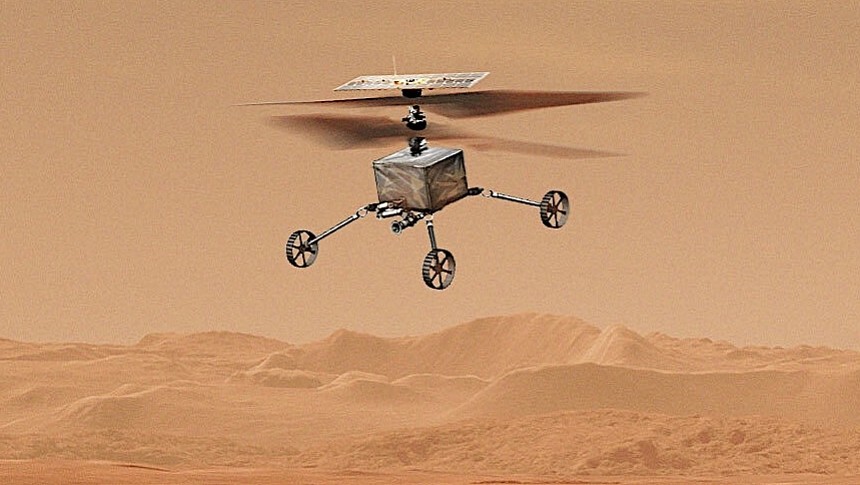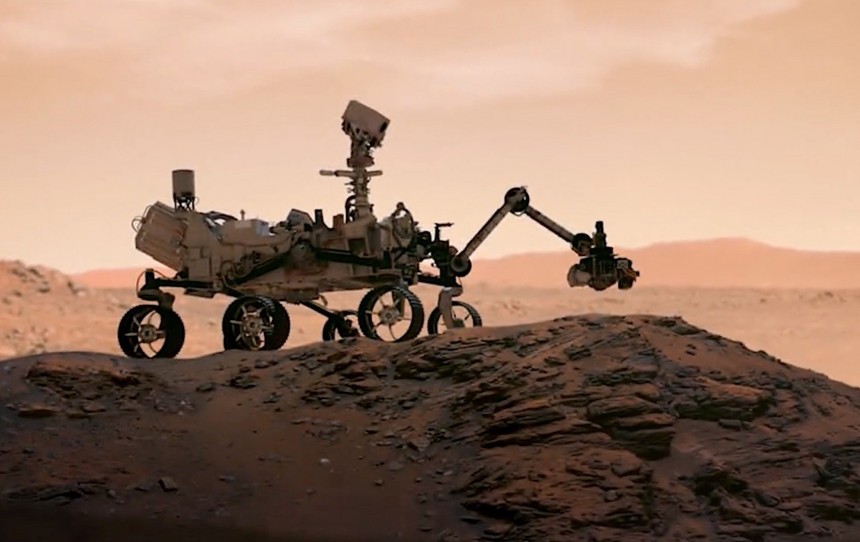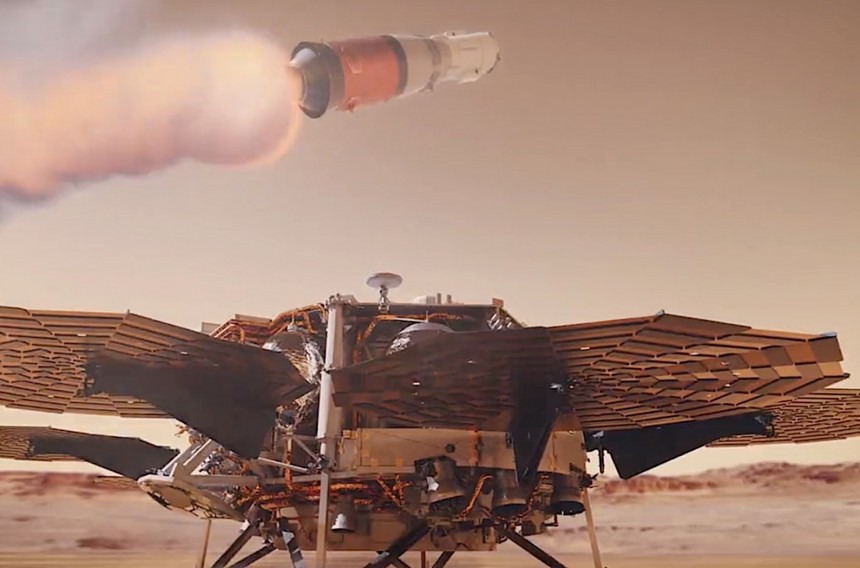It's been two years since humanity has learned that sustained, powered flight is possible in the atmosphere of an alien planet. Sure, you could say it was obvious that would be the case, but when it comes to space exploration nothing goes unchecked.
To prove such a thing is possible NASA sent to Mars, together with the Perseverance rover, a tiny helicopter thingy called Ingenuity. The machine took flight for the first time in the spring of 2021, and has since managed to go up a total of 52 times, covering a total distance of 7.3 miles (11.7 km).
It was obvious from the get-go that the success of Ingenuity would open up NASA's appetite for more alien planet-bound helicopters. And the upcoming Mars Sample Return mission provides the perfect opportunity to develop some more.
Chances are you already know what this mission is all about. Set to kick off sometime in 2027, it calls for a number of pieces of hardware to work in perfect sync for bits of the Red Planet to eventually be brought to Earth.
The mission involves first and foremost the Earth Return Orbiter. That's a spacecraft that will park itself in orbit around Mars, waiting for soil samples to be brought up. Once that is completed, the ship will set course for its home world to deliver the goods.
Then comes the lander. Set to depart separately from the Orbiter, about a year later, it will descend to the surface of the planet and act as the receiving platform for the samples. The lander comes with an ascent vehicle that will take the pieces of Mars up to the Orbiter for transport to Earth.
The samples themselves are presently being collected by the Perseverance rover. Initially, another such machine was to be developed for the task, but in a bid to cut costs the existing rover was granted the honor back in 2022.
To date, Perseverance has already collected ten small titanium tubes and deposited them on the surface of the planet. The samples in this so-called sample depot are the backups, with the main ones stored inside the rover itself, and are to be used in case something happens and the main tubes cannot be collected and sent to Earth.
Until recently, the above pieces of hardware were all it took for the Mars Sample Return mission to succeed. But, as it often happens in space exploration, redundancies are needed, and NASA decided one way it could do that is to develop several more helicopters that'll act as "a secondary method of sample retrieval."
Inspired by the success and design of the existing Mars flier, the new helicopters "would expand on Ingenuity's design." What that means is that, unlike the current piece of tech, which uses landing legs to prop itself against the surface of the planet, the Sample Return ones will have wheels. Also, gripping capabilities are to be added, allowing the helicopters to snatch onto the sample tubes spread on the surface and transport them to the lander.
The Ingenuity was put together by people from NASA's Jet Propulsion Laboratory (JPL), with help from a team from AeroVironment's MacCready Works division. The same crew will now work on advancing the design of the new pieces of hardware.
AeroVironment, best known for developing all sorts of weaponized drones, announced this week it received a $10 million contract from NASA to start work on the initial development units for the helicopters.
Officially called Sample Recovery Helicopters, they will first come to be as conceptual designs and engineering development units. If all goes according to plan, detailed design and build will follow, ending with qualification and flight hardware tests before the helicopters are sent to Mars. As per current plans, two such helicopters are to make the trip there.
As for the samples themselves, it's hoped the opportunity of studying them right here on Earth will help us unlock some of the neighboring planet's secrets faster.
At the beginning of the year, we learned of a dedicated facility being planned to handle the samples once they reach our planet. Located at the Johnson Space Center in Houston, Texas and dubbed the Mars Sample Receiving Project office, it will be the place where the piece of alien world will be transported once they land. Once safely stored and analyzed, they will be distributed to laboratories worldwide for study.
Although most of the pieces of this daring mission are in place, a lot of work still lies ahead. Consider that, aside from the fact a lot of the mission's hardware is still to be developed, NASA has to come up with methods to recover and transfer samples, contain and assess them, and coordinate the science being conducted.
Still, the Mars Sample Return mission is happening, and come the early years of the next decade our world will never be the same again.
It was obvious from the get-go that the success of Ingenuity would open up NASA's appetite for more alien planet-bound helicopters. And the upcoming Mars Sample Return mission provides the perfect opportunity to develop some more.
Chances are you already know what this mission is all about. Set to kick off sometime in 2027, it calls for a number of pieces of hardware to work in perfect sync for bits of the Red Planet to eventually be brought to Earth.
The mission involves first and foremost the Earth Return Orbiter. That's a spacecraft that will park itself in orbit around Mars, waiting for soil samples to be brought up. Once that is completed, the ship will set course for its home world to deliver the goods.
Then comes the lander. Set to depart separately from the Orbiter, about a year later, it will descend to the surface of the planet and act as the receiving platform for the samples. The lander comes with an ascent vehicle that will take the pieces of Mars up to the Orbiter for transport to Earth.
The samples themselves are presently being collected by the Perseverance rover. Initially, another such machine was to be developed for the task, but in a bid to cut costs the existing rover was granted the honor back in 2022.
Until recently, the above pieces of hardware were all it took for the Mars Sample Return mission to succeed. But, as it often happens in space exploration, redundancies are needed, and NASA decided one way it could do that is to develop several more helicopters that'll act as "a secondary method of sample retrieval."
Inspired by the success and design of the existing Mars flier, the new helicopters "would expand on Ingenuity's design." What that means is that, unlike the current piece of tech, which uses landing legs to prop itself against the surface of the planet, the Sample Return ones will have wheels. Also, gripping capabilities are to be added, allowing the helicopters to snatch onto the sample tubes spread on the surface and transport them to the lander.
The Ingenuity was put together by people from NASA's Jet Propulsion Laboratory (JPL), with help from a team from AeroVironment's MacCready Works division. The same crew will now work on advancing the design of the new pieces of hardware.
AeroVironment, best known for developing all sorts of weaponized drones, announced this week it received a $10 million contract from NASA to start work on the initial development units for the helicopters.
As for the samples themselves, it's hoped the opportunity of studying them right here on Earth will help us unlock some of the neighboring planet's secrets faster.
At the beginning of the year, we learned of a dedicated facility being planned to handle the samples once they reach our planet. Located at the Johnson Space Center in Houston, Texas and dubbed the Mars Sample Receiving Project office, it will be the place where the piece of alien world will be transported once they land. Once safely stored and analyzed, they will be distributed to laboratories worldwide for study.
Although most of the pieces of this daring mission are in place, a lot of work still lies ahead. Consider that, aside from the fact a lot of the mission's hardware is still to be developed, NASA has to come up with methods to recover and transfer samples, contain and assess them, and coordinate the science being conducted.
Still, the Mars Sample Return mission is happening, and come the early years of the next decade our world will never be the same again.
























